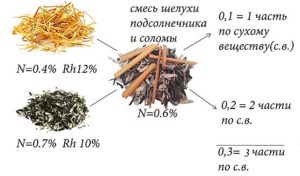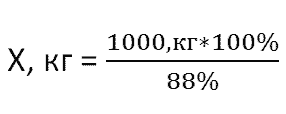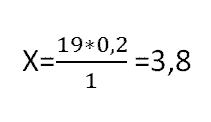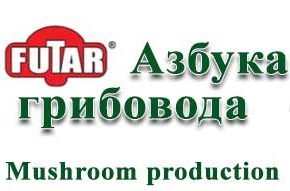Nitrogen content calculator
Nitrogen content calculator
On-line calculator is located here. Under this link, you can enter the moisture content and nitrogen content of substrate components and immediately see the nitrogen content in the mixture.
When mixing the main components of raw materials, high nutritional components and nutritional supplements with different nitrogen content, it is necessary to know how much nitrogen will be produced at the output. One of the easiest ways to calculate mixture is the so-called “cross method”. Humidity of organic samples varies greatly. For example straw used in production has a moisture content of up to 15% and a straw substrate has a moisture content of 72-75%. Therefore, the content of total nitrogen (according to Kjeldahl ) is always determined for dry matter.
The nitrogen content of raw materials also varies within the same type of raw materials (climate, soil, plant variety). Therefore, in order to obtain the exact content, an analysis of the total nitrogen content (Kjeldahl analysis) should be ordered from the agrochemical laboratory.
For example, we need to prepare a two-component substrate from straw with a moisture content of 12%, nitrogen content of 0.4% and a sunflower husk with 10% humidity, nitrogen content of 0.7% to obtain a total 0.6% nitrogen content in the resulting mixture.

The calculation sequence is as follows:
Determination of the mass fractions of the components by dry matter

In the “cross” center we enter the required final result of the nitrogen percentage content. On the left we have 2 initial percentages in our components. On the right are the mass shares required to obtain the final content. The upper and lower parts of the “cross” correspond to the first and second mixture components to the left of the initial percentage and the mass part by dry matter to the right.
According to the “rule of the cross” a smaller number is subtracted from a larger number in the specified sequence.
Determination of the components weight with a specified humidity. Since the components often have different humidity, mixing a ton of straw (with Rh 12% for example) with two tons of sunflower husk (for example, with Rh 10%) will not give a mixture with a given total nitrogen of 0.6%. To accurately determine the components weight, it is necessary to make a proportion:
Straw dry matter with a moisture content of 12%
The weight 1000, kg X, kg
Percentage 100% -12% = 88% 100%
 = 1136.36 kg – the weight of straw with a moisture content of 12%
= 1136.36 kg – the weight of straw with a moisture content of 12%
Husk dry matter with a moisture content of 10%
The weight 1000, kg X, kg
Percentage 100% -10% = 90% 100%
 = 1111.11 kg – weight of sunflower husk with a moisture content of 10%.
= 1111.11 kg – weight of sunflower husk with a moisture content of 10%.
Thus, from the main constituents of the straw substrate (N = 0.4%, Rh = 12%) and sunflower husks (N = 0.7%, Rh = 10%), the required dry matter ratio is 1: 2 or 1 * 1136.36 kg = 1136, 36 kg of straw to 2 * 1111.11 kg = 2222.22 kg of sunflower husk to produce a mixture with a total nitrogen content of 0.6% with a total weight of 1136.36 kg + 2222.22 kg = 3358.58 kg.
Using nutritional supplements to the main components of the substrate, the nitrogen content will increase. For example, to the prepared two – component substrate, alfalfa hay with nitrogen of 2.3% and a moisture content of 14%.

In the preparation of substrate compositions, there are various recommended restrictions on the amount of added nutritional supplements. This is due to changes in substrate structure as a result of its consumption by the fungus – loss of structure, change in the incubation temperature regime – greater heat production, higher contamination risk from competitive organisms. Recommended application rate for highly nutritional components is no more than 30% and 5-10%. for other nutritional supplements.
In this case, in order to obtain a nitrogen content of 0.8%, the percentage of alfalfa hay will be following:
2 parts / 17 parts * 100% = 11.76% ≥ 5%.
It turns out that you should either replace it with an additive with a high nitrogen content or get a lower nitrogen content in the resulting substrate.
What is the minimum content of nitrogen necessary so that the proportion of the additive does not exceed 5% of the total substrate mass. We transform 5% into parts:
100% / 5% = 20 parts / 1 part.
Original Data

Proceeding from the proportion
X 19 parts

0.2 1 part
Thus, with a maximum of 5% added component, the minimum content of total nitrogen content is 4.6%.
|
Raw materials |
Total nitrogen content,% of dry matter |
|
Main Components |
|
|
Sawdust |
0.37 |
|
Flax shove |
0.52 |
|
Wheat straw |
0.6 |
|
Rye straw |
0.55 |
|
Cotton flock |
0.62 |
|
Sunflower husk |
0.85 |
|
Buckwheat |
0.6 |
|
Enhanced Nutrition Components |
|
|
Alfalfa straw |
1.43 |
|
Nutritional Supplements |
|
|
Sesame Seed |
1.6 |
|
Clover hay |
2.0 |
|
Malt sprouts |
2.03 |
|
Alfalfa hay |
2.4 |
|
Cacao husks |
2.46 |
|
Wheat bran |
2.58 |
|
Beer pellet |
4.42 |
|
Soy flour |
7.09 |
|
Peas hay |
2.38 |
|
Feather meal |
12.0 |
After selecting the substrate components based on the approximate content of total nitrogen from the reference tables with the average data, it is necessary to submit the raw material for analysis to obtain the actual nitrogen content for each batch purchased, perform a final calculation and make changes to the recipe taking into account the current moisture of the raw materials.
